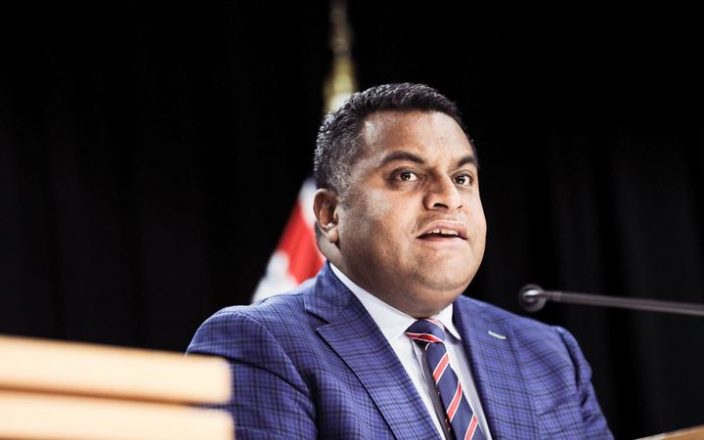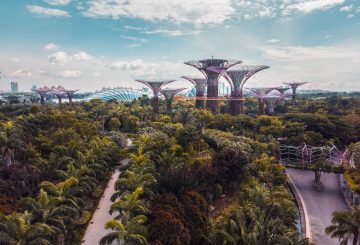New Zealand will welcome five times its usual number of new residents by the end of next year in what the government describes as the “biggest immigration decision in living memory”.
Immigration Minister Kris Faafio said he wanted 165,000 migrants and their families to make New Zealand their home, a move welcomed by the business, agricultural and health sectors.
But migrants are more cautious, saying ‘healthy scepticism’ and uncertainty over details will put their celebrations on hold.
Those whose jobs need registration – such as teachers and nurses – or those who are paid more than $27 an hour can apply, as can most migrant workers who have been here more than three years.
Partners and children overseas will be able to join them once managed isolation capacity makes that possible next year.
About 3000 doctors and nurses are among those waiting for residence.
Kāpiti GP Anne Solomon has been waiting for a year, unable to apply for residence for her family of five. Without it one daughter, who is leaving school this year, cannot work. Her eldest daughter is at university.
“Actually the most frightening prospect for us is that it tears the family apart. You know, one has to leave and another is settled, and you start to wish you’d never come because this is the last thing you want to happen. It damages the very thing you set out to protect and the children’s future you wanted to ensure.”
Covid-19 had accentuated the sense of uncertainty, she added.
“It’s such a tenuous time, it affects you emotionally in ways it’s very hard to put in writing, but the sense of insecurity is quite profound. We’ve been in a process of waiting for verification and clarification for over a year now and they’ve pushed it further down the line.
“Obviously if I’m optimistic, it sounds like something’s really moving but there’s a sort of learned scepticism now – until we see it in our hand we won’t really believe it, but we want to believe it.
“But it could be another 14 months because it’s December you apply and then it could take a year. Yes, it’s good news, but we have to maintain this sort of healthy scepticism until we really see the results, then there will be a huge sigh of relief.”
Migrants NZ has 54,000 members, and one of its founders Anna Burghardt said she was inundated with calls and messages today from people who were happy or anxious.
Some say they are determined not to get their hopes up about the promise of residence by the end of next year and are worried they will join a new queue.
Calls for apology
IT consultant Satish Bamal, who was granted residence in August, said he had mixed feelings – happy for those affected, but disappointed others had to go through such an ordeal.
“An apology would be really good because there has been a lot of suffering, there was a lot of mental torture and having to deal with all the stress and uncertainty, so an apology would be definitely amazing.”
Faafoi batted away suggestions he should apologise today.
“We acknowledge the difficulties that people have been through but I think this morning, they woke up to a pretty comprehensive resolution to some of the uncertainty that they’ve had and their employers have had.”
“I actually think it should have been an apology rather than a simple acknowledgement because people have been hurting,” said immigration adviser David Cooper.
“I think it would make a huge difference, because if you’ve been sitting in New Zealand, and you haven’t hugged your kid for 18 months or two years, and a minister of the Crown is standing up and saying, ‘I’m sorry, we got there in the end, if this has hurt you I am really sorry but we’re moving forward’.
“I think that would go a long way to make those migrants who have been working really hard to keep to help New Zealand keep running during Covid feel a whole lot better about the place that they may choose to settle in.”
But events manager Tom Finkin felt an apology would be hollow. He has been in NZ since 2017 and applied in November 2019, working for a charity then moving to Wanaka. He described the immigration process as an arduous journey.
“I’m super happy for everyone that can now not have to go through what we did. But it’s bittersweet. The fact that we’ve just had to pay so much, do so much to get here and then all of a sudden they’re just gonna say ‘oh sweet, here’s a pathway to residency for everyone else’.
“This was really foreseeable. There was a backlog in 2018, so come around to 2019 nothing’s happening. It’s got to have been a major blow to the economy with the amount of people like myself that have probably left that could have really contributed and really helped these companies do more with with our skills that we’ve brought over from another country.”
Immigration New Zealand said applications like his would continue to be processed rather than waiting for the new pathway to residence.
Faafoi said the applications would be dealt with in two tranches, with December applications being prioritised for residence applications already in the queue, and those with EOIs including teenagers 17 and over, to give them certainty about working and studying.
With 100,000 residence visas issued in the last three years, and 165,000 promised to be approved in 12 months, some are sceptical that timeline will be honoured.
“They’ve currently got 11,000 or 12,000 applications in the queue and they can’t manage that right now,” said Cooper.
“How are they going to manage that sort of volume [165,000 visas]? We’re hearing already from people, the concern they’re expressing is why the delay in being able to apply and where is the confidence that people actually will get through the system quickly, within a year?
“Despite the streamlining if immigration don’t have the resources, we will simply create another queue.”
SOURCE: RNZ News






























































